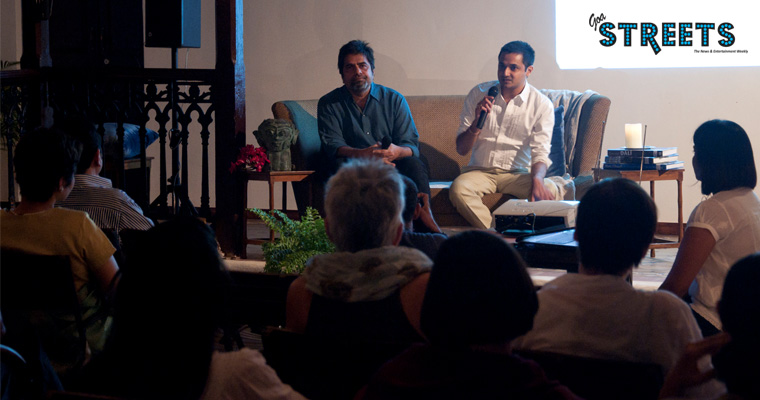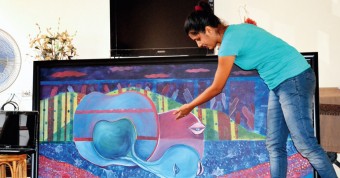His creative prowess rarely spares a medium. Sudarshan Shetty has worked with wood, viagra 60mg aluminium, stainless steel, terracotta, even transforming discarded furniture sourced from Sunday markets into breathtaking installations. A rocking skeletal horse or a sword ominously swinging like a pendulum inside an intricately carved wooden arched dome, to name a couple.
The contemporary Indian installation artist, who has showcased his craft in New York, Paris, Vienna and different parts of India, was in Goa, speaking to writer Siddharth Dhanvant Sanghvi about an artist’s mind and the act of creation.
The candid interview was part of ‘Sanghvi’s Salon’, a four-part conversation series hosted by Sunaparanta, Goa Centre for the Arts at Altinho, Panjim.
While Sanghvi asked the probing questions and Shetty replied with candour, Goa Streets eavesdropped.
Sanghvi: To be an author is to consciously live with the awareness of the extent of disorder around you. I came to write because I wanted to organise those disorders. Tell us something about how you view the process?
Shetty: When I graduated from the J.J. School of Arts, we were trying to create something very similar to the modern art vogue in the 60s in America. My parents were worried for a while because I couldn’t portray very well. They didn’t understand my work. My father, a Yakshghana artist (a folk-art from Karnataka) always told me that an artist needs to speak very clearly in order to entice the audience. Once you entice the audience, then you can talk about serious themes like death and sorrow. So, slowly, I realised I needed to go back to the aesthetics of symmetry, to understand the ancient Indian Art. My creative process is an attempt to be symmetrical in a world of collapse. Can you live this duality at the same time? That’s what I question when considering an idea.
Sanghvi: Often, as young creative artists, you make beautiful objects, but don’t get the support of galleries. What made you endure?
Shetty: When we graduated (in 1985) there was nothing to look forward to. We never thought that we would be showing (our work) in London; all artists displayed in the galleries were above 50, and there were just a handful of galleries at that. We were very happy, had a great time as there was no (milestone of) success at the time.
Sanghvi: Maya Angelou was raped as a child and she stopped speaking. She became a voracious reader and then, when she spoke as a young woman, she spoke as an eloquent orator. What has been the loss that has instructed you?
Shetty: I think it’s a loss to simply view things from a personal point of view. I want my work to be inclusive. What I view as love may be different from someone else. Personal experiences are greater than the self; to reconstruct them, you have to keep the self aside. So, when I make something out of my experience, whether it is about loss or love, I want it to be inclusive, not exclusive.
Sanghvi: What has been the influence of love in your work?
Shetty: You know, Nizamuddin Auliya said, “I want to conquer the world by filling it with love.” But what is love? It could be time spent with someone, it could also be not having them; it could be seeing the first girlfriend across the street… This answer is best left unanswered.
Sanghvi: Tell us something about the people and galleries you have collaborated with.
Shetty: Sunita Kumar Emmard from Bangalore is a great person to work with. In fact, she was the first gallery owner to tell me, “If you work with me, you can’t work with anyone else.” Somehow, I like that, had wanted that all along. It was also great with Jack Tilton, because he has worked with artists like Richard Tuetle, Francis Alys and David Hammons, whom I admire.




